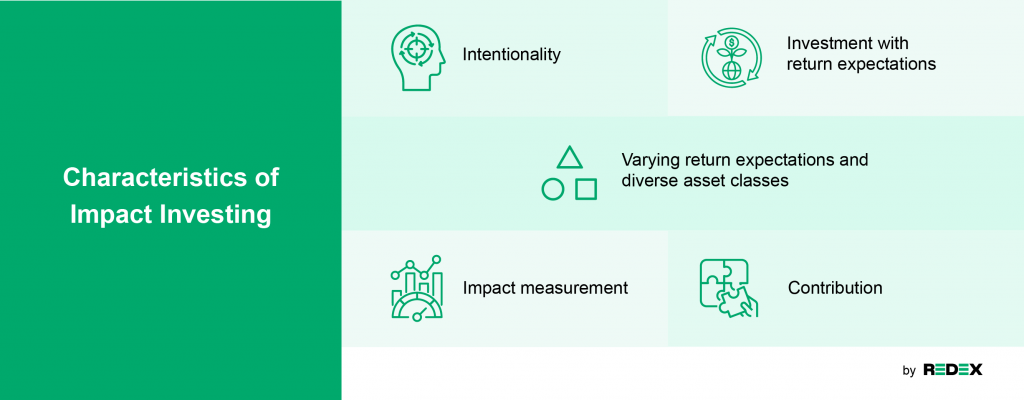Impact investing or investing to create positive impact has been gaining in popularity over the last two decades. But what is impact investing and what role can RECs play in it? In our blog series on impact investing, we will be sharing more about the topic including:
- What is impact investing?
- Why make impact investments?
- The challenges of impact investing?
- Solutions to the challenges of impact investing
Let us begin and explore the world of impact investments.
What is impact investing?
The term ‘impact investing’ was coined in 2007¹. Impact investing refers to the strategy and practice of making investments to generate positive social and environmental impact in addition to financial returns. As impact investing balances business with compassion, it appeals to potential investors².
To qualify as an impact investment, the investment must be both measured and reported against the impacts. This is to demonstrate the intentionality and contributions of investors³. Other elements of impact investing include expectation of returns, a range of return expectations and impact measurement.

Characteristics of impact investing⁴
Intentionality: The investor possesses the intent for the investment to further a positive social or environmental impact.
Investment with return expectations: There is an expectation for the impact investment to generate a financial return on capital or a return of capital at the very least.
Varying return expectations and diverse asset classes: Impact investments may aim for below market to risk-adjusted market rates and can comprise various asset classes.
Impact measurement: The social and environmental impact and financial return of these investments must be measurable for transparency and accountability purposes.
Contribution⁵: The investor follows a credible narrative, or thesis, which describes how the investment contributes to achievement of the intended goal—that is, how the actions of the impact investor will help achieve the goal. In this case, contribution is considered at the level of the impact investor and can take financial or non-financial forms.

Where can one make impact investments?
Depending on their objectives, investors may make impact investments in both developed and developing countries across a variety of assets and initiatives to achieve social, environmental and financial targets.
Projects may include initiatives such as providing renewable energy to enhance the social and economic prospects of under-served rural populations, building self-sustaining and resilient communities. These projects may be funded by various methods, from direct monetary investment to arrangements that utilise the trading of renewable energy certificates (REC).
REDEX, a one-stop shop for RECs, has developed Impact Marketplace to facilitate the trading of Impact RECs issued from impact investment projects involving the installation of distributed renewable energy assets. Impact Marketplace makes trading convenient by connecting impact project investors with potential buyers of Impact RECs.
Impact RECs represent more than just energy, they are also an investment in the sustainable environment and social development of disadvantaged communities. As such, procuring Impact RECs will not only help buyers to reduce Scope 2 emissions, but also potentially strengthen their sustainability and corporate social responsibility credentials. Find out more about Impact Marketplace, be part of the global transition to net zero and achieve corporate social responsibility objectives.
Make an impact today!
¹ Mudaliar & Dithrich, “Sizing the Impact Investment Market”, 11
² Rockefeller Philanthropy Advisors, “Impact Investing: An Introduction”, 3
³ Global Sustainable Investment Alliance, “Global Sustainable Investment Review 2020”, 7
⁴ Global Impact Investment Network, “What You Need to Know About Impact Investing”
⁵ International Finance Corporate, “Creating Impact: The Promise of Impact Investing”, xi

